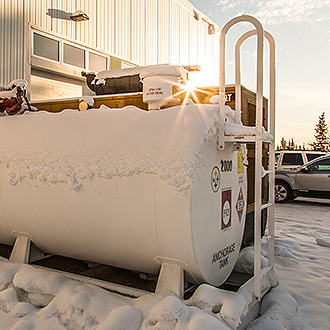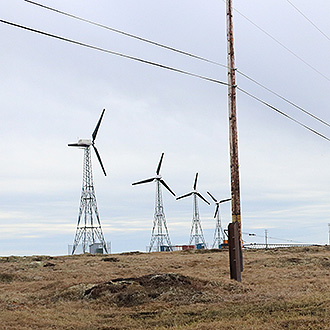Power System Modeling and Analysis

These studies and modeling work are critical for examining reliability and affordability as electric grids and microgrids transition to increased penetrations of renewable energy resources, inverter-based resources, and distributed energy resources. This work includes techno-economic analysis, including capacity expansion and production cost modeling, where the dispatch of generators and resources in the system are determined to ensure reliability through maintaining the load and generation balance and minimize the cost to run the system. The team at ACEP uses several techno-economic tools as appropriate to the size and complexity of the system and is actively performing studies in this area for remote Alaskan communities and the Alaska Railbelt transmission system.

Dynamical modeling of power systems is used to assess the stability of these systems in response to contingencies such as faults and scheduled or unplanned loss of generators or transmission lines. Dynamical modeling is performed when new generators, resources, or transmission lines are added to the system whether that be a part of near-term planned changes to the system or long-term decarbonization strategies. Traditionally, different modeling tools have been used based on the complexity or size of the system, the voltage level of the system or the area of interest, and the type of stability questions being raised. However the proliferation of inverter-based resources (IBR) including wind, solar and battery energy storage, is not only challenging the decision of when to use which tool, but has also raised the question of what level of detail should be included for the individual IBR models within those tools. ACEP research bridges power systems and power electronics disciplines to help answer these questions.

In recent years, electric power systems have become digitalized with the introduction of the smart grid concept. In this digitization, tremendous opportunities in the power industry have opened due to the emergence of multi-scale data from synchrophasors, advanced metering, weather forecasting and energy markets to dynamically learn and adaptively control a power system. Many applications such as supervisory control and data acquisition systems, state estimation, distribution energy management systems and machine learning are being employed to further the application of data-driven models in power system operation. ACEP seeks to work with community and utility partners to employ advanced analytics and big data applications to enhance grid operations and resilience throughout Alaska's remote microgrids and on the Railbelt.


